Bizarro Comparo: 1996 Lincoln Town Car vs. 1999 Mercedes S-Class
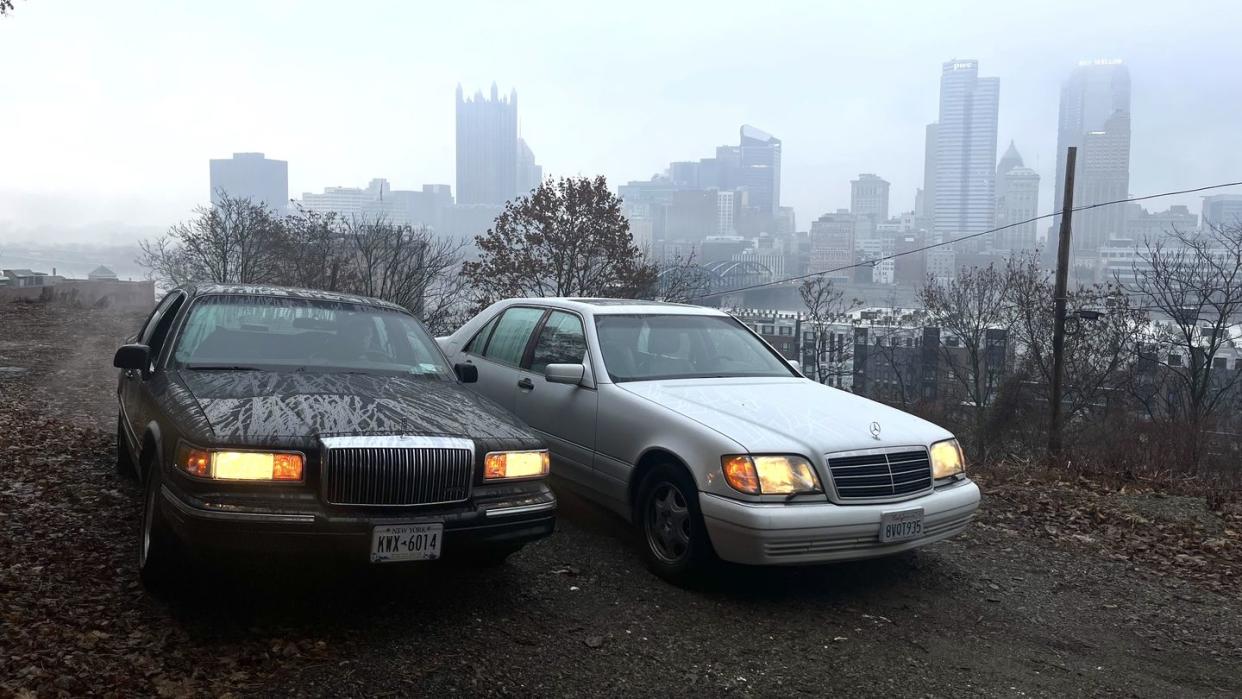
"Hearst Magazines and Yahoo may earn commission or revenue on some items through these links."
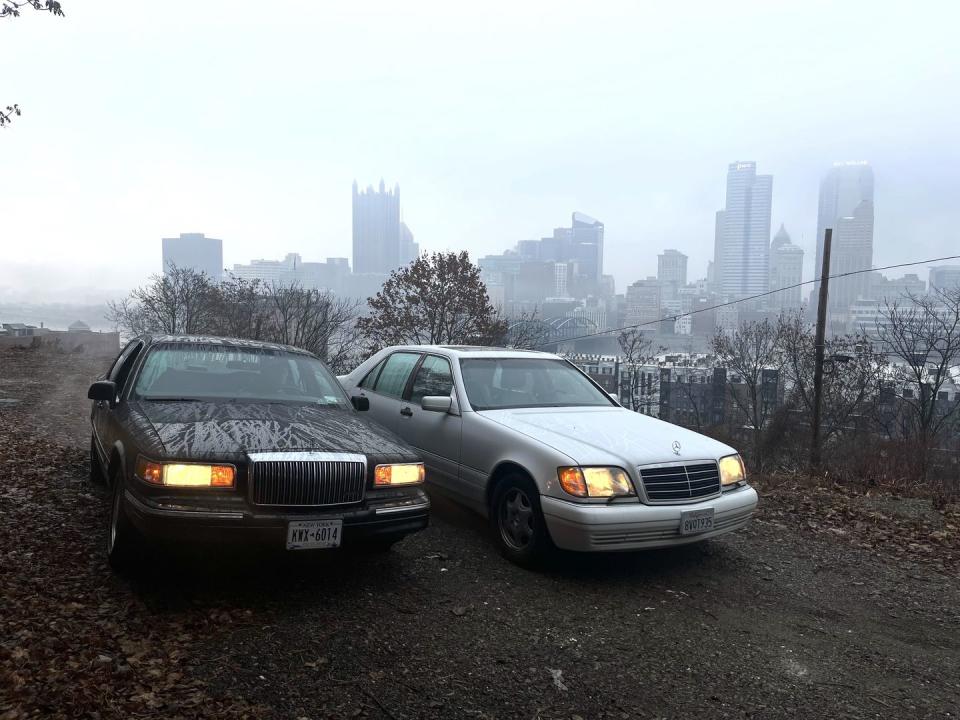
The year was 1996. Twenty-eight years ago. Bill Clinton was elected to a second term. Charles and Diana divorced. Mad Cow Disease was a thing, and eBay had been live for a year. In that distant world of luxury cars, a new Mercedes S-class was unaffordable, while a Lincoln Town Car, even at half the price of the Benzer, was, to my mind at least, unthinkable.
For most of 1996, my father—the satirist, author, and syndicated television critic Marvin Kitman—was a mere stripling of 66 years. I was in my thirties and my eldest son, Ike, hadn’t yet celebrated his third birthday.
Much has changed since. Among notable developments chez moi, my dad died in June last year, aged 93, sharp right up until the end. A few months ago, Ike, just turning 30, moved back East from California, where he’d worked at the Mercedes-Benz Classic Center as a mechanic. Rebuilding Gullwing gearboxes and infinitely complicated W111 rear suspensions, as well as a hundred other jobs that would have sent me calling for a flatbed and an emergency re-fi, were now his stock-in-trade. No wonder he drives a 1999 W140 series Mercedes S-class (near as identical to a 1996). No longer expensive to buy, this king of the Nineties (1992–1999, to be precise) remains an icon of brutalist style and a paragon of complexity. For many of us, it will always define—with no disrespect to the current line of excellent S-classes—Mercedes-Benz at its patrician finest, in all its gloriously imposing and costly aggression. Ike drives it to work every day at his new job restoring old Mercs with Classic Workshop in Hackettstown, New Jersey.

In his will, Pops Kitman, ever the jokester, decreed that following his cremation some portion of his ashes should be spread at the 50-yard line of Pittsburgh’s Heinz Field (since renamed Acrisure Stadium). Home of the Steelers NFL club, whom he followed through thick and thin (very thin of late), almost as avidly as he rooted for his (and my) beloved Pirates baseball team, Pittsburgh was where my dad spent his formative years. He endured many losing seasons before the Bucs’ most recent World Series victories in 1960, 1971, and 1979, which buoyed his spirits immeasurably, though they would have to do for the rest of his life.
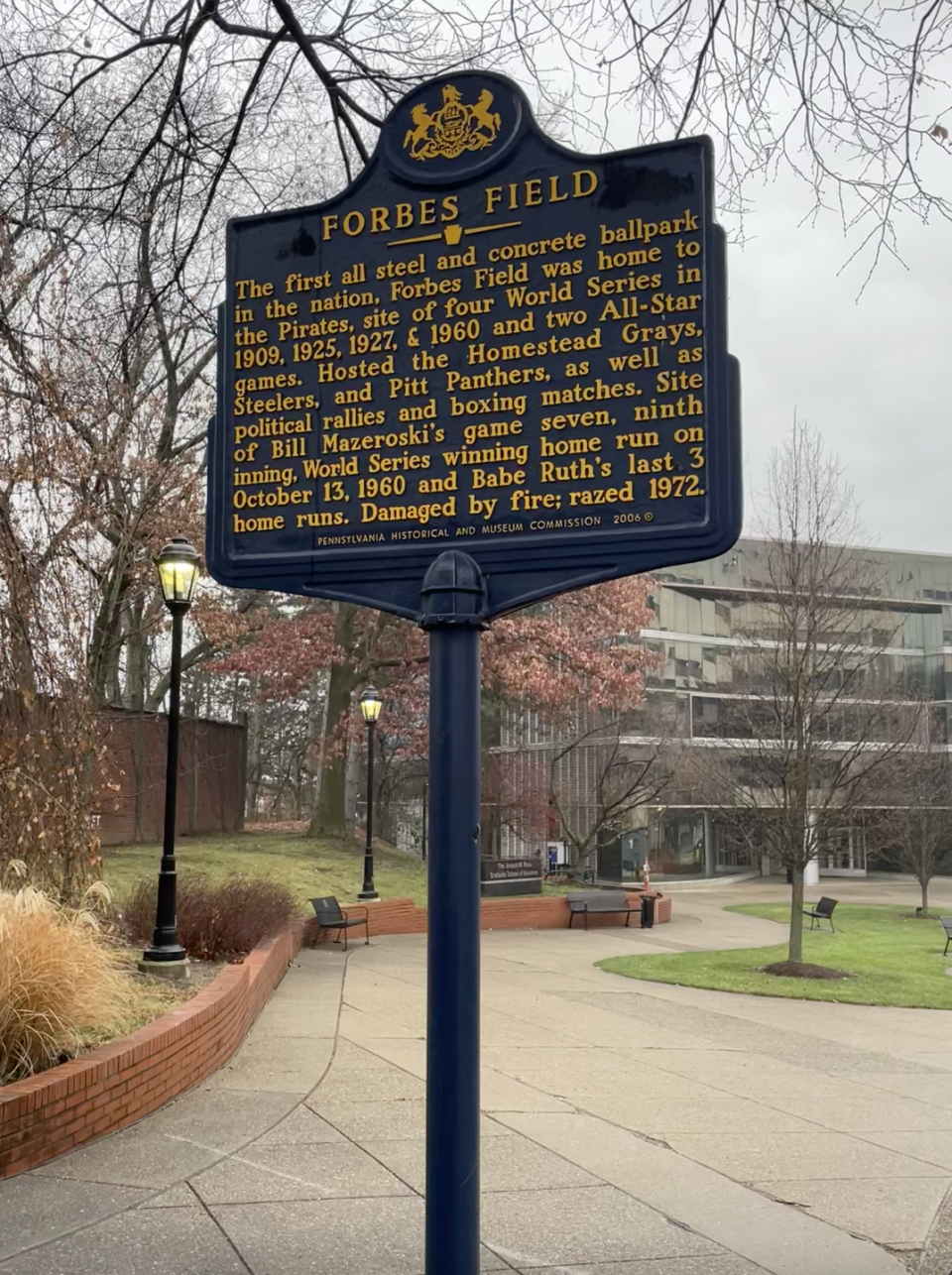
Marvin’s Keystone State affliction was inherited not just by me but also by Ike and my younger son, Milo, now 15. It’s a low-return enthusiasm that they have both borne with admirable grace throughout their lives, despite the parade of disappointing seasons that are all they have ever known. Ellie, my daughter, loved her granddad plenty but somehow managed to extricate herself from the lifelong grip the onetime City of Steel held on the rest of us. So, too, did my mother, who gritted her teeth for 50 or 60 years before revealing her true colors—which, suffice it to say, aren’t the Pittsburgh teams’ black and gold—late in their 72-year marriage. Today, she lives in an assisted-living facility where she still doesn’t like sport but has largely forgotten just how much she hated it. Alas, 800-mile, two-day-one-night road trips are not for her any longer.
That was but one of several obvious problems with Marvin’s post-game-of-life prescription for himself, but another stood out: You can’t legally walk onto an empty professional football field and dump cremains. And, no matter how treasured they are, you can’t quietly spread ashes in front of 68,000 drunk football fans any more than you can get away with surreptitiously streaking naked across the gridiron at halftime. Ejection and arrest will be swift and sure. Even if we went in via the metaphorical front door and asked the team for permission, and even if they didn’t say “Hell No!!” right away—which I’d bet my last Trump gold coin would have been the response—the red tape was bound to be suffocating. So, we cooked up a Plan B, which involved going to a Steelers game in his honor and then spreading the ashes elsewhere in the ’Burgh.
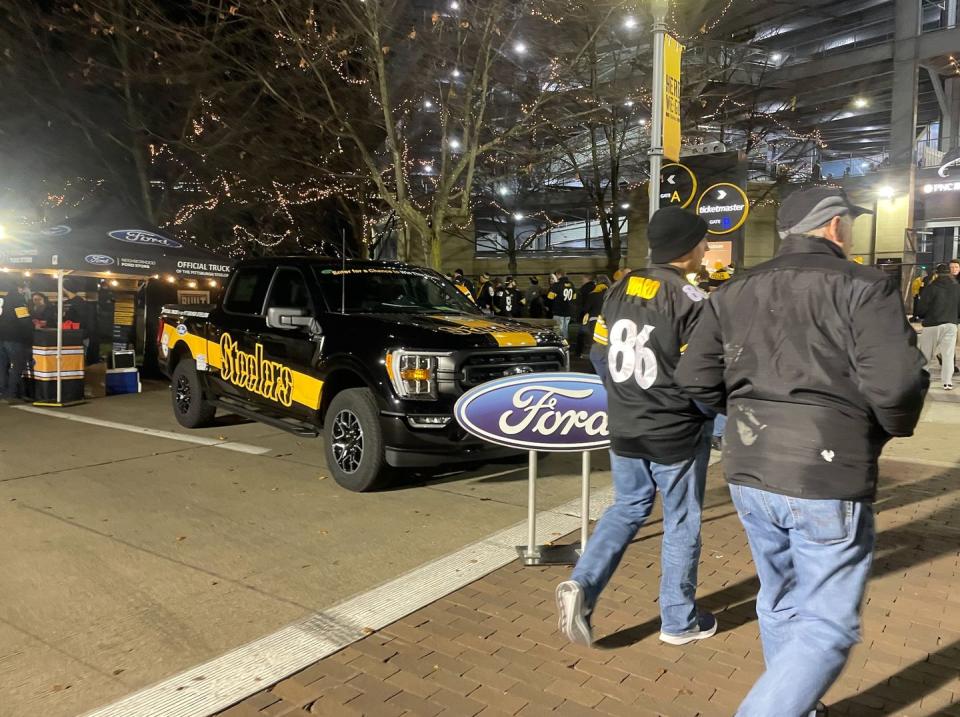
Thus, it came to pass that my three kids, plus sister A.J., in from London with her partner, Chris, me, and my gal, Paula, set out for Pittsburgh from Ike’s New Jersey home with some special cargo, indeed. Early one crappy, December morn, some of our number piled into a white 1996 S320 with Ike at the helm while others joined me as I twirled the wheel and the various electric comfort controls of my black 1996 Lincoln Town Car. In other words, the luxury-car comparo that could have been but probably never was, 28 years late.
Did I forget to mention that I—proud Renault R16 owner, Rover fan, Peugeot addict, and lifetime Lotus enthusiast—own a Lincoln Town Car? Well, I do. And notwithstanding what I said earlier about my feelings toward them back in 1996, I came to know and appreciate Town Cars while touring for many years as a manager of rock bands. Whatever one might say about their girth and somewhat vulgar, opera-windowed style (less overwrought in black on black, sans vinyl roof and fake-wire wheel covers, as here)—as well as anything you might add about their general lack of back-road prowess—they were excellent if you thought of them as slightly garish living-room sets on wheels. Reliable, quick enough, and notably spacious of cabin, boasting gobs of legroom and a capacious trunk capable of swallowing unfeasible amounts of luggage and guitars, or as the old saw goes, enough bodies to play bridge, with an alternate or two in tow, if only they weren’t dead. Or even if they were.

Road manners in the second-generation Lincoln Town Car (1990–1997,) though weighted toward traditional straight-line comfort, were improved enough over the previous-generation model to have raised some eyebrows back in the day. The second-gen Town Car captured Motor Trend’s 1990 Car of the Year honors upon launch, a dimly remembered accolade that sent us to our search engine, which reminded us that the MT award was for American cars only (a separate foreign-car award was launched by the magazine in 1976). This suggested to attentive students of automotive media at the time that Ford’s full-size marketing budget likely came along for the ride, even if, as we also learned, Lincoln’s advertising had not traditionally graced the Trend.
Not unlike their related Ford Crown Victoria brethren, Town Cars were cited by many a contemporary buff book for their improved handling, despite their hoary, solid-rear-axle Panther chassis, a corporate relic dating to 1979. Translating the rosy language of that bygone, reduced-expectation era, the huzzahs meant Town Cars weren’t as lousy through the bends as one might have feared scant years earlier. Encountering the rare tight corner on our route, body roll was formidable with body control as riotously uncontrolled as it was amusing. But as the interstate miles piled up—on roads including I-78, I-76, and I-80—the Lincoln tracked nicely and proved so untroubled by higher speeds on smooth roads that I’d already concocted an excuse for any unwanted introduction to law enforcement. “Apologies, officer. I had no idea. So to recap, you’re saying that’s the name of the road, not the speed limit? Well, I’ll be darned!” I never did figure how I’d explain trying to keep up with signs posted for Pennsylvania’s State Highway 322.

The rather primo Town Car in question was bought nice-priced from a friend for my New York–based picture car company before the writers’ and actors’ strikes, as it replicates the cars that would haul investment bankers, stockbrokers, and lawyers around the city in the 1990s—a must for period pieces recreating that era. (A long drive in it recalled for me the arrival of its replacement for the 1998 model year, a car I drove with Ford on the press launch, along with the legendary racer and raconteur Parnelli Jones, who regaled me with anecdotes and unsolicited driving tips, including, unexpectedly, his advice on how best to drive drunk.)
At speeds averaging 75 miles per hour on the way to Pittsburgh, the 1996 Lincoln squeezed a creditable 20 miles from each gallon of regular gas it inhaled from its 4.6-liter SOHC V8. Ike reported similar numbers from his S320, its six-cylinder dispensing with a gallon of premium every 23 miles. Two divergent takes on luxury, our big sedans did share certain points of commonality, including substantial turning circles of 41 (Mercedes) and 42 feet (Lincoln) and widths exceeding six feet. But there were differences too. The Mercedes, with its 3.2-liter six (remember when MB nomenclature corresponded to actual engine displacement?), packed more horsepower with 228 (at 5600 rpm) than the V-8 Lincoln (210 horsepower at 4250 rpm) but less torque (232 lb-ft at 3750 rpm versus 275 lb-ft at 3250 rpm). Even so, the big German could tear off the 0–60 run in 8.3 seconds, according to contemporary road tests, versus the Lincoln’s more leisurely 9.6. Ironically, the Mercedes was the heavier car, weighing 4500 pounds against the Lincoln’s comparatively svelte 4040 pounds, even though the American tanker was over a foot longer at 218.9 inches to the hefty S-class’s 205.2 inches, this despite having a shorter wheelbase (117.4 inches against the Mercedes’s 123.6). Some part of the weight differential can be explained by the Mercedes’s novel use of twin-paned window glass all around, which undoubtedly played a role in making it the noticeably quieter car.
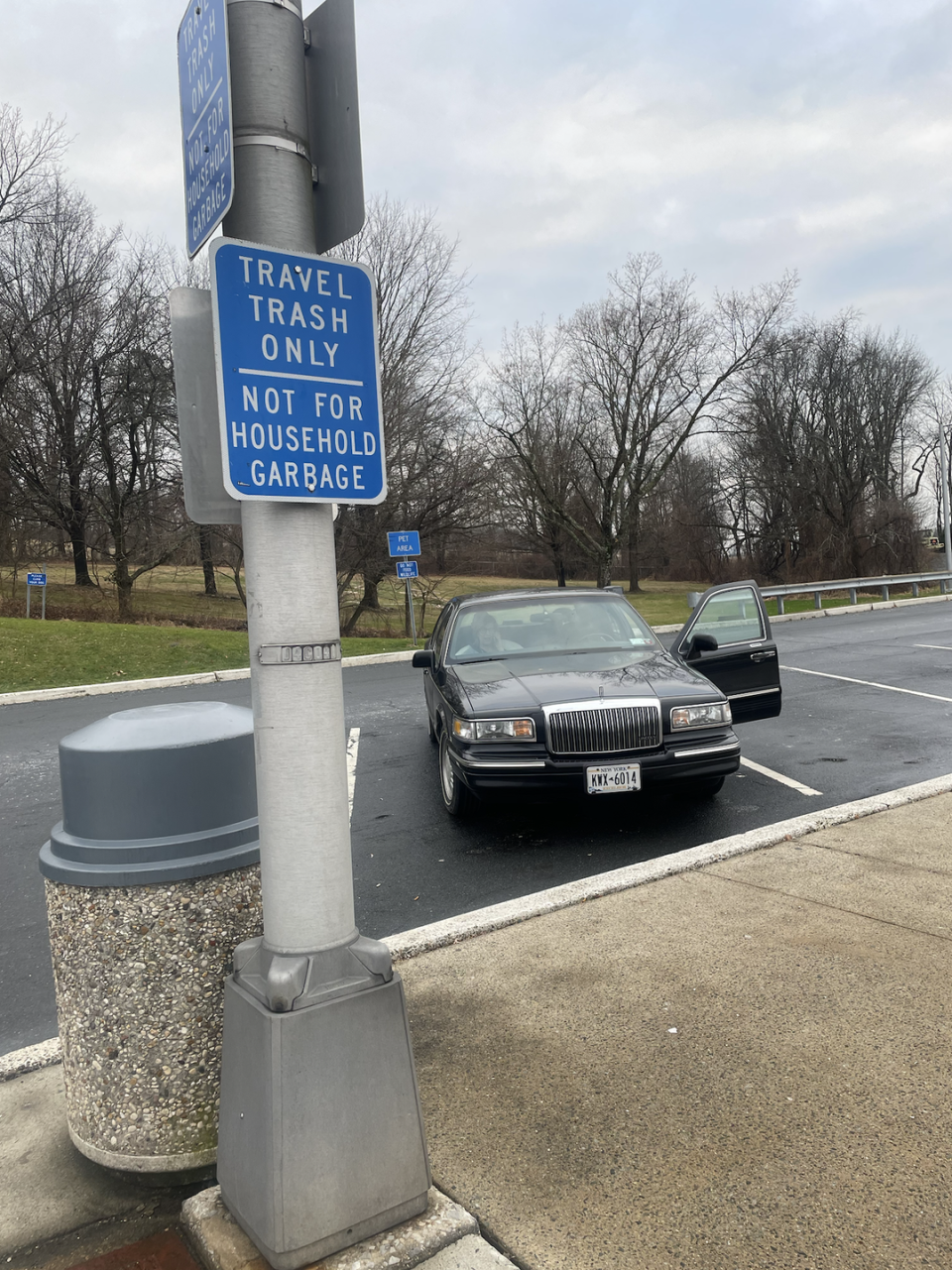
Today, with 6000-pound electric vehicles and gas SUVs the norm, both of our mounts for this mission appear positive featherweights. And the slightly better economy and performance of the Mercedes suggests that even then the potential benefits of extra gears (five for Mercedes, four for Lincoln) were already understood. The many positives of the German’s sophisticated multi-link independent rear suspension and substantial front and rear subframes were also plain to see and feel, with less roll, vastly superior body control, and a better ride overall, especially at speed.
The Mercedes trunk was smaller, though hardly ungenerous, with a volume of 15.6 cubic feet as against the longer Lincoln’s astonishing 22.3 cubic-foot cargo hold, its big caboose and huge rear overhang helping to explain some of its waywardness when pressed. The Mercedes won the headroom race, with 38.5 inches versus the TC’s still creditable 38, though the Lincoln crushed in the rear legroom competition, with 41.1 inches available against the MB’s 39.6.
Still, there will be little suspense as I turn up here 28 years after the fact to state the obvious: A W140 Mercedes-Benz S320 is a better car than a second-generation Lincoln Town Car. As it should be, costing a hair under $70,000 when new (and almost double that for a V-12 S-Class) versus the Lincoln’s comparative bargain starting price of $38,120. Settling into the S-class’s driver’s seat, one hasn’t gone far before one realizes that one is conducting a vehicle that is not just better, but better by many orders of magnitude. Both of our cars have low mileage for their age—around 123,000 miles for the Merc and 117,000 for the Lincoln—and both are in fine fettle. But from its drivetrain and method of construction, front to rear, the Mercedes is so obviously the more sophisticated rig. Its seats, though harder, are more comfortable over distances. Materials are finer (the wood is real, for instance), and its dashboard display old-school elegant, where the Lincoln’s looks like it was plucked from an early Texas Instrument. It’s not just the M-B’s massively rigid unibody construction—the Lincoln is old school body on frame—but the S320’s handling is better, its steering nicer, and its brakes more powerful, with a ride less hindered by a body that insists on interpretive dance at the mere sight of a bumpy corner. In luxury conveyances, such things matter.
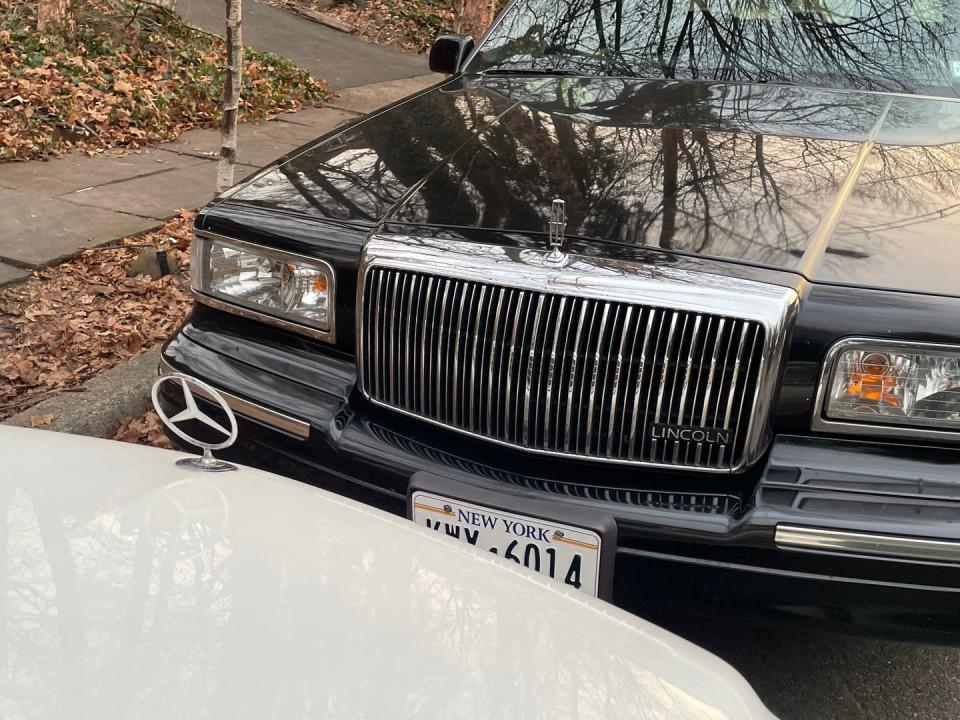
If nothing else, these two heavyweights underscore the vast chasm in the thinking between Detroit and Stuttgart in the Nineties. While the Lincoln and its 17-year-old platform had already grown long in the tooth by 1996, its 1997 reskin enjoyed a remarkable 14-year run (for those counting at home, that’s 32 years for the Panther platform), reminding us that Ford was done seriously developing traditional American sedans in favor of SUVs and trucks a looong time ago. For its part, Mercedes has continued down the sedan road through the present day, while also building large SUVs that sell well. The company’s broad ambition has paid off, with brilliant sedans still on tap, while Ford increasingly seems to have painted itself into a sport-utility corner. We certainly hope it can paint itself out someday soon. But until then, we have these fine machines to thank for both companies’ efforts. Much has changed since 1996, but these nearly 30-year-old luxo-warriors are still around and fully capable of serving in their intended fashion, delivering all the comfort and long-distance utility they had when new.
Such thoughts receded as we awoke early Sunday morning that weekend following the Steelers’ dismantling of the Cincinnati Bengals Saturday afternoon, a surprise tribute to our fallen patriarch and an unexpected delight keeping the team’s dim playoff chances alive for another week, a hopeful portent as we set off with our filial mission still to complete. With fog blanketing the Mount Washington neighborhood where we’d rented a VRBO for the night, we headed for the Oakland section of Pittsburgh where stands a part of the outfield wall of Forbes Field, the Pittsburgh Pirates’ home park from 1909–1970. Here, baseball greats like Clemente, Stargell, Bonds, Kiner, and Waner once patrolled. And now they have company.

A car-lover’s community for ultimate access & unrivaled experiences.JOIN NOW Hearst Owned
You Might Also Like

